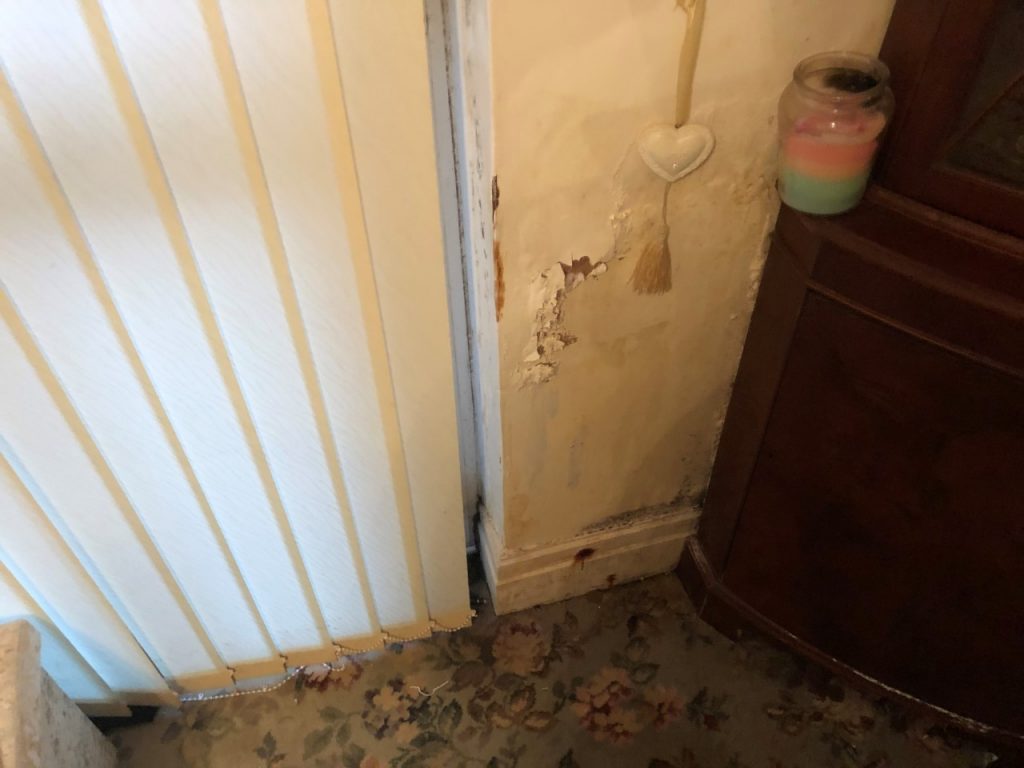Condensation or Damp? What’s the difference between them?
Spotted damp or condensation in your home? These two issues are common in UK households, however the treatment and causes of these problems are very different. Our Building Surveyor Ed is sharing insights and advice regarding these common problems….
Damp is often misdiagnosed, so employing a surveyor with the knowledge to correctly differentiate between the two will ensure the correct remedial work is undertaken, and money not spent on expensive damp proof courses which are often ineffective, when simple changes can be made in your mode of occupation with no cost to address condensation.
Condensation:
Spot mould staining occurs due to high moisture levels within the air (high relative humidity), which when come in contact with a cold surface, reaches its dew point and water will condense on the cold surface. This in turn, causes the staining. It often occurs in locations such as the abutment of walls and ceilings due to thermal bridging where there is a break in continuity in the building fabric, causing a ‘cold spot’ or behind furniture where there is a lack of air flow. To rectify this, the surface temperature requires increasing (heating), while increasing air changes (ventilation and extraction) to reduce the moisture content in the air. The high moisture content in the air is often exacerbated by simple household tasks, such as, cooking and drying washing internally. However, it is a balancing act and sometimes a more significant intervention may be necessary, such as, the installation of a positive ventilation system.
Here is an example of condensation from one of our surveys:


Damp:
Diagnosing rising damp is essential… whereas condensation does not have any significant associated risk to the building fabric (although the health implications should not be underestimated), rising damp does. Particularly where there are timber ground floors. Timber floor joists in contact with damp affected masonry will suffer from rot and/or wood beetle infestation. Therefore, works to resolve the damp and protect floor timbers are essential.
The remedial works to resolve damp may also vary dependant on the age and type of building. Specifying remedial works to resolve damp in historic buildings takes an understanding of the original construction methods and materials. Over recent times, this has often been forgotten and modern methods adopted which could only make the damp issues worse.Therefore, consulting a surveyor in matters to resolve condensation or damp is invaluable in ensuring the correct remedial works are adopted.

Alleged ‘specialists’ in damp treatment often don’t understand that adequate ventilation and allowing properties to ‘breathe’ can be as effective as installing a damp proof course, or simple measures such as using Lime mortar to stonework, reducing external ground levels or ensuring rainwater goods are operating efficiently.
Get in touch if you spotted these issues in your home. We can help determine the cause and the best way forward to eliminate damp or condensation from your home.
Building Surveyor Ed: ed@fisherwrathallsurveyors.co.uk – 01524 69922


